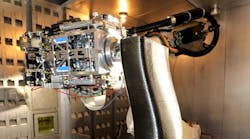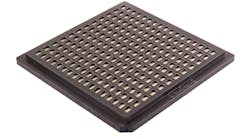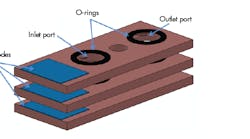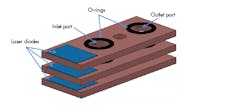Thermal management can be an important step in achieving a long operating lifetime for the circuits and devices in a defense electronics system. Active devices such as power transistors and laser diodes are never 100% efficient, which means some amount of power applied to these devices will be converted to heat. The lower the efficiency, the more heat is generated for a given amount of applied power.
To prevent damaging heat buildup around an active device, the heat must be dissipated into the surrounding environment or into the materials within a system. Different materials and structures can serve this purpose. However, with the current trend of designing greater functionality into smaller packages, DARPA and many other military organizations appear to be on a relentless quest for more effective heat-removing materials with outstanding thermal properties.
Part of the miniaturization push in military electronics involves increased use of active devices with high power densities, such as laser diodes and gallium-nitride-on-silicon-carbide (GaN-on-SiC) power transistors. While such devices are capable of high output power in terms of optical and electromagnetic (EM) signal energy, respectively, they are still less than 50% efficient. Therefore, a great deal of power-supply and input signal power will be converted to heat within a relatively small package area. Ideally, such heat can be channeled away by using printed-circuit-board (PCB) materials that encourage the heat flow or additional materials and structures that can help form thermal channels.
Channeling the Heat
Understanding the basic thermal properties of standard materials can ease the task of forming these thermal channels. For cooling purposes, one of the most essential material properties is thermal conductivity, or its capacity to conduct heat, which is measured in watts of power per meter per degree Kelvin (W/m-K). The inverse of thermal conductivity is thermal resistance. So, a material with good heat flow will have high thermal conductivity and, at the same time, low thermal resistance.
Microchannel coolers (MCCs) are structures with chambers for cooling liquids. Stacks of MCCs such as this can be used to cool multiple devices. (Courtesy of Micro Cooling Concepts Inc.)










